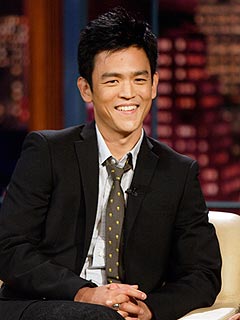
Lee Jin-Man/Associated Press
A South Korean watched news reporting about a possible nuclear test conducted by North Korea on a TV screen in Seoul on Tuesday.
WASHINGTON — North Korea confirmed on Tuesday that it had conducted its third, long-threatened nuclear test, according to the official KCNA news service, posing a new challenge for the Obama administration in its effort to keep the country from becoming a full-fledged nuclear power.
The KCNA said it used a “miniaturized and lighter nuclear device with greater explosive force than previously” and that the test “did not pose any negative impact on the surrounding ecological environment.”
The test led to a crescendo of international condemnation Tuesday, with President Obama calling for “swift and credible action by the international community” against North Korea, and Russia, Britain, South Korea and the United Nations echoing the U.S. tone. The United Nations Security Council scheduled an emergency meeting at 9 a.m. New York time to take up the matter.
Preliminary estimates suggested a test far larger than the previous two conducted by the North, though probably less powerful than the first bomb the United States dropped on Japan, in Hiroshima, in 1945. The Russian defense ministry was quoted as saying the blast surpassed 7 kilotons; the Hiroshima bomb had an explosive yield of 15 kilotons.
The test is the first under the country’s new leader, Kim Jong-un, and an open act of defiance to the Chinese, who urged the young leader not to risk open confrontation by setting off the weapon. In the past few days a Chinese newspaper that is often reflective of the government’s thinking said the North would “pay a heavy price” if it proceeded with the test. But it was unclear how China would act at the United Nations Security Council, which scheduled an emergency session as news of the blast played out.
The United Nations secretary-general Ban Ki-moon, condemned the test in a statement Tuesday.
The Obama administration has already threatened to take additional action to penalize the North through the United Nations in the event of a test. But the fact is that there are few sanctions left to apply against the most unpredictable country in Asia. The only penalty that would truly hurt the North would be a cutoff of oil and other aid from China. And until now, despite issuing warnings, the Chinese have feared instability and chaos in the North more than its growing nuclear and missile capability, and the Chinese leadership has refused to participate in sanctions.
Mr. Kim, believed to be about 29, appears to be betting that even a third test would not change the Chinese calculus.
The test set off a scramble among Washington’s Asian allies to assess what the North Koreans had done.
The United States sent aloft aircraft equipped with delicate sensors that may, depending on the winds, be able to determine whether it was a plutonium or uranium weapon. The Japanese defense minister, Itsunori Onodera, said Japan had ordered the dispatch of an Air Self-Defense Force jet to monitor for radioactivity in Japanese airspace.
Japan’s new prime minister, Shinzo Abe, told Parliament that “based on precedents, Japan believes that this quake was triggered by a North Korean nuclear test,” and said the country was considering “its own actions, including sanctions, to resolve this and other issues.”
But the threat may be largely empty, because trade is limited and the United States and its allies have refrained from a naval blockade of North Korea or other steps that could revive open conflict, which has been avoided on the Korean Peninsula since an armistice was declared 60 years ago.
It may take days or weeks to determine independently if the test, was successful. American officials will also be looking for signs of whether the North, for the first time, conducted a test of a uranium weapon, based on a uranium enrichment capability it has been pursuing for a decade. The past two tests used plutonium, reprocessed from one of the country’s now-defunct nuclear reactors. While the country has only enough plutonium for a half-dozen or so bombs, it can produce enriched uranium well into the future.
No country is more interested in the results of the North’s nuclear program, or the Western reaction, than Iran, which is pursuing its own uranium enrichment program. The two countries have long cooperated on missile technology, and many intelligence officials believe they share nuclear knowledge as well, though so far there is no hard evidence.











